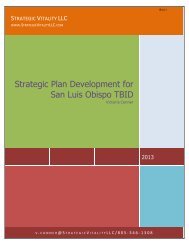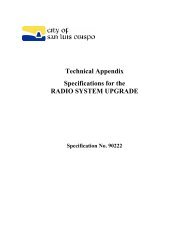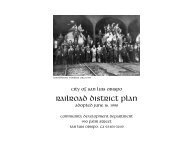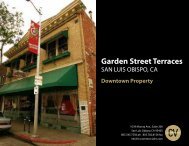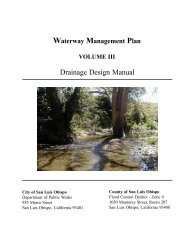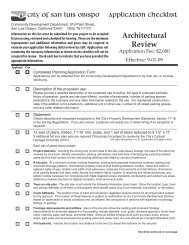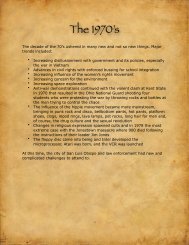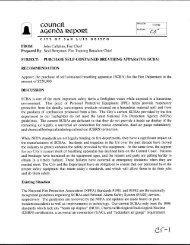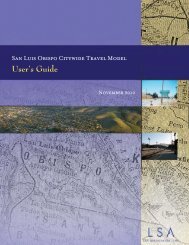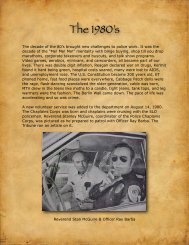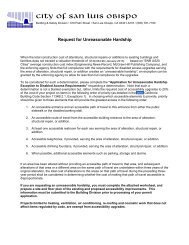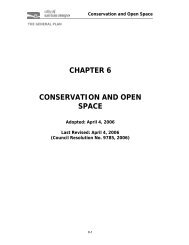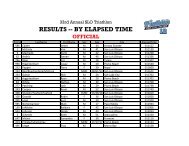The 1960's - the City of San Luis Obispo
The 1960's - the City of San Luis Obispo
The 1960's - the City of San Luis Obispo
Create successful ePaper yourself
Turn your PDF publications into a flip-book with our unique Google optimized e-Paper software.
Officer Copeland<br />
A reporter conducted an interesting experiment in November 1964. He<br />
wrote his results in <strong>the</strong> Tribune and titled it “Feet May Be Flat, But Mind<br />
Is Sharp.” It reads as follows:<br />
“<strong>The</strong> cop on <strong>the</strong> beat may have flat feet, but he has a sharp<br />
mind—I know. I recently took <strong>the</strong> aptitude test administered<br />
to police candidates in <strong>San</strong> <strong>Luis</strong> <strong>Obispo</strong>. It was difficult. Its<br />
difficulty accounts for <strong>the</strong> failure <strong>of</strong> half <strong>the</strong> 84 candidates who<br />
have taken <strong>the</strong> test since 1961. <strong>The</strong> exam is one <strong>of</strong> <strong>the</strong> major<br />
reasons why approximately 96 out <strong>of</strong> every 100 men who<br />
apply for police <strong>of</strong>ficer positions never put on a uniform in <strong>the</strong><br />
city.<br />
“Passing <strong>the</strong> test is one <strong>of</strong> several requirements which keep<br />
<strong>the</strong> city police force effective—and short <strong>of</strong> men. <strong>The</strong> force is<br />
currently short <strong>of</strong> seven patrolmen. Approximately ¾ <strong>of</strong> <strong>the</strong><br />
police <strong>of</strong>ficer applicants are screened out before <strong>the</strong>y even get<br />
to <strong>the</strong> aptitude test, <strong>San</strong> <strong>Luis</strong> <strong>Obispo</strong> Police Chief William<br />
Sch<strong>of</strong>ield said. If a man fulfills preliminary requirements, he<br />
may take <strong>the</strong> California State Personnel Board Aptitude Test<br />
for Law Enforcement.<br />
“When I took <strong>the</strong> test, 13 candidates (not including myself)<br />
were seated around a table in <strong>City</strong> Hall. Seven passed. <strong>The</strong><br />
test consisted <strong>of</strong> four categories. <strong>The</strong>y were observation and<br />
memory (15 points), judgment for law enforcement (15<br />
points), writing and speaking effectively (25 points), and<br />
analytical and reasoning (45 points). Applicants who passed<br />
<strong>the</strong> test were <strong>the</strong>n given an oral exam and had <strong>the</strong>ir<br />
backgrounds checked before being <strong>of</strong>fered an appointment.<br />
“Although high school graduation was <strong>the</strong> only educational<br />
requirement, <strong>the</strong> testing required a higher degree <strong>of</strong><br />
concentration unusual in <strong>the</strong> high school exams I have taken.



